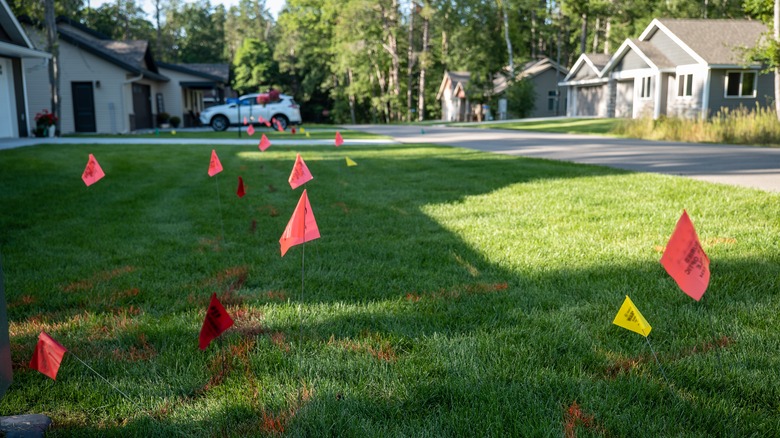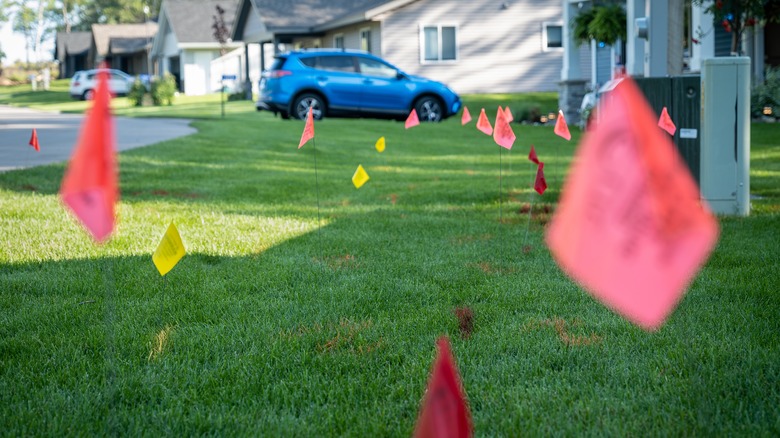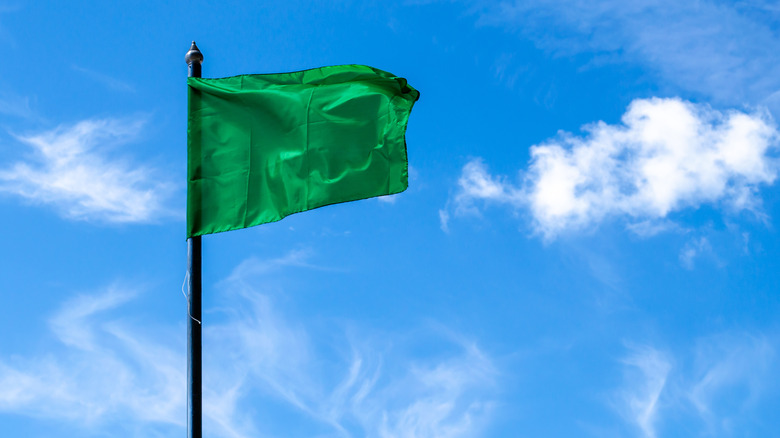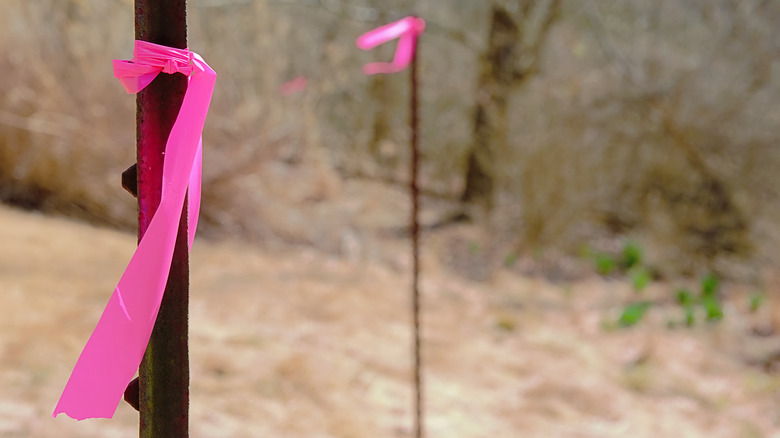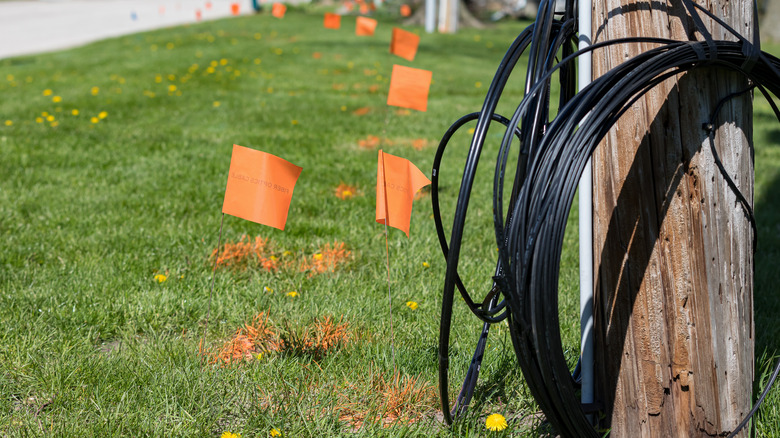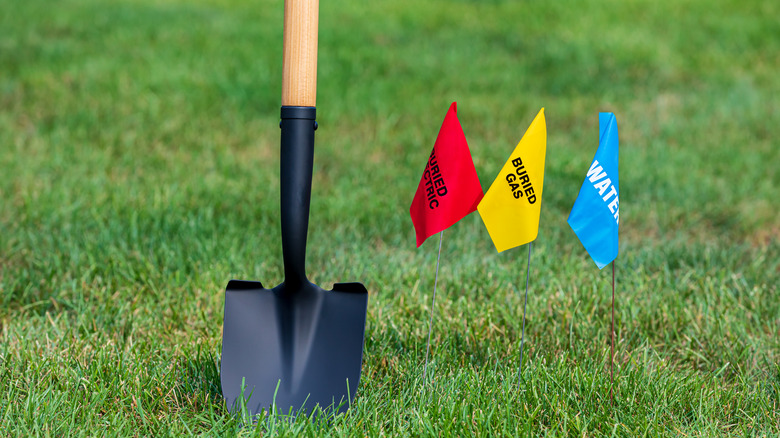The Different Colored Lawn Flags & What They Mean
While driving through the neighborhood, have you ever noticed a colored flag placed firmly into the ground? Just as importantly, have you noticed different shades of paint on the ground? When it comes to home and lifestyle, colors and flags are used to mark utility issues that are present within the house. After identifying a problem within the home, homeowners report their presumed utility issues by calling their local 811 center, which works with any local citizens on their digging projects. If you come across a lawn flag in any of its varying colors, the meaning could range from a proposed excavation to an irrigation issue.
None of us are strangers to colors symbolizing a unique issue or belief, whether that's an orange porch light or a red front door. Colors are one of the most obvious ways to signal danger, caution, or even a celebration, and knowing the significance of each color (especially as it relates to your lawn) can help you better assess the situation. Thankfully, the American Public Works Association (APWA) created a color code that can help us better understand, examine, and assess lawn flags we see in passing or in our very own front yard. Let's get started.
White flags
When you come across a white flag in your front lawn, a proposed excavation has been flagged around the home. By definition, this is a man-made cavity that marks the outer limits of an excavation, whether that's for construction, protection, or exploration. While it's unlikely that a proposed excavation in the front lawn of a home will be the sight of an exploration, it may mean that a dig is in your future to ensure the safety of you, your family, and nearby neighbors. An excavation is likely to lead to a new building foundation, road, or an extension of your home. It can also be a common safety measure to rid any underground dangers from the home.
Red flags
Red flag markers signify electrical work — specifically, power lines, cables, and conduit. Since our power lines run underground, a red flag marks the areas where these lines run through to make sure homeowners aren't faced with any danger around the front yard. Power outages run wild in neighborhoods with high electricity use and overpopulated areas, which allows the red flag marker to identify these electrical areas before somebody digs one up and ends up in a dangerous situation. When you come across a red flag marker, be sure not to dig into the surrounding areas.
Green flags
Somebody clearly had a sense of humor when they picked these colors, because green flags are the markers of (what else?) sewer and drain lines. These lines help us regulate our water to ensure what goes in our mouth is clean. Drain lines transport our wastewater away from the home (ideally, you don't want a waterlogged lawn), while sewer lines create a path for the water that's sent away. When wastewater is sent back to our local sewer system, our plumping can continue to work smoothly without clogging or contamination. Much like the rest of these flag markers, green flags play an essential role in keeping our home safe. When you come across this flag marker, it's best to stay away.
Yellow flags
If you come across a yellow flag, it is there to signify natural gas, oil, steam, petroleum, and other flammable materials. When these gaseous materials produce in an excessive amount, they can contaminate soil or explosions. If you come across a yellow flag marker, be sure to stand far away from it, for reasons that should probably be obvious. Gaseous and flammable ingredients are highly dangerous to the interior and exterior of our bodies, in ways that have been well-documented over the years.
Pink flags
Pink flags are often used as a marker for unidentified territory that have been examined by local governmental entities. There are multiple reasons why a pink marker would be in the front lawn of someone's home, the most common of which is to mark off the edges and boundary lines of property that shouldn't be crossed (without permission) by other homeowners. More specifically, though, pink flags ensure that the markings are only temporary. When it comes to planning and zoning territories, the flags may last longer and require a more detailed protocol involving research, field work, data analysis, and documentation, but these are not intended to be permanent flags.
Orange flags
Orange is the color of only the most social flags — really. Believe it or not, orange flags are often the reason our landlines remain protected. In our modern world, orange flags signify the lines that fuel our communication systems — our phone, internet, and TV are all included in this bundle. Orange flags are intended to remind neighbors, kids, and strangers alike to stay away from the area, otherwise affecting the signal we need to power our systems of communication. Even though the era of landlines is mostly behind us, orange flags are responsible for preserving our ability to connect with the world.
Purple flags
Much like blue flags, purple flags symbolize water, but not the kind that we drink. Instead, purple flags are intended to signify recycled water that's been produced from waste water, creating a system that effectively irrigates our lawn through repurposed water. Reclaimed water lines, while typically safe, still operate through a system that cannot be disturbed. It's best not to touch or step on these lines as their purpose is to irrigate the landscape and bring moisture to our front lawn. As homeowners and visitors alike, we should leave these system lines alone, since we depend heavily on underground irritation systems. However, purple flags aren't the only flags that water boasts.
Blue flags
Much like the color blue, blue flag markers represent water. Unlike purple flags, blue flags mark the lines that filter our drinking water, manage irrigation, and regulate slurry, which is quite literally the reason we remain hydrated. Damage to a line marked by blue flags can impact the quality of drinking water, cause flooding, and prevent us from getting clean. Blue flags mark one of the more delicate features of the home — so these are best left observed and untouched, for clear reasons.
